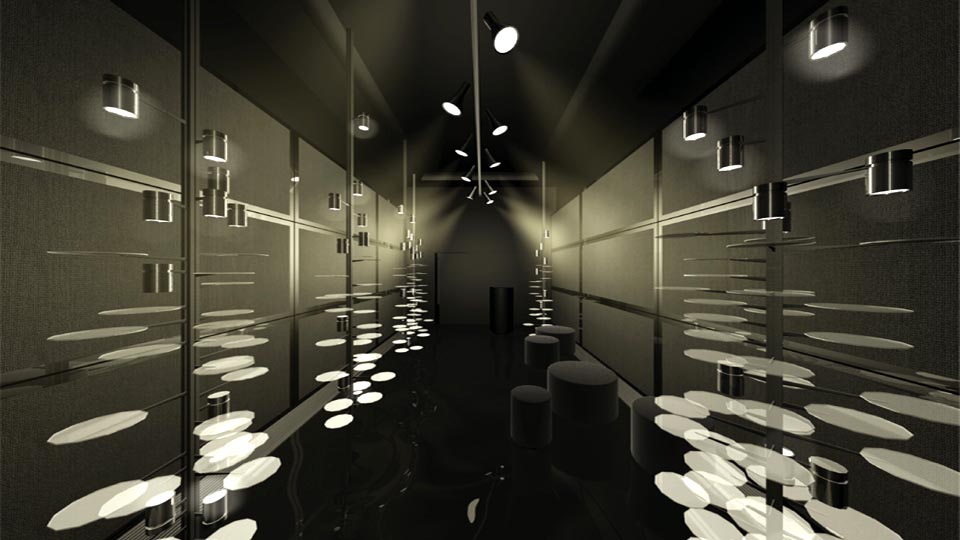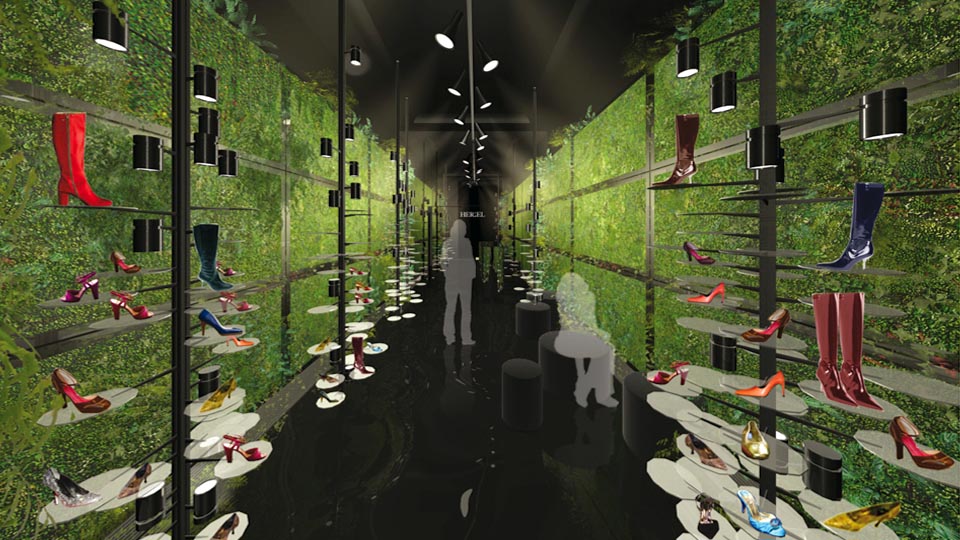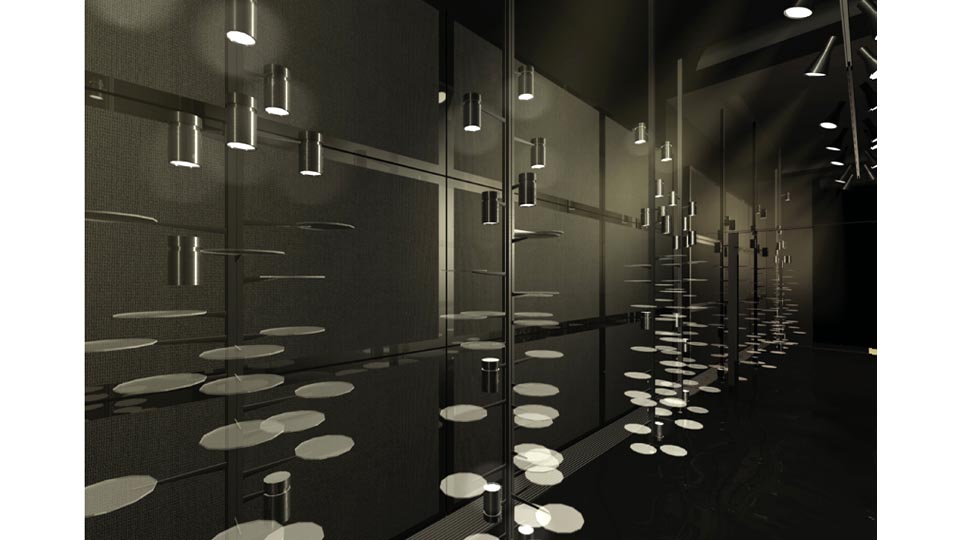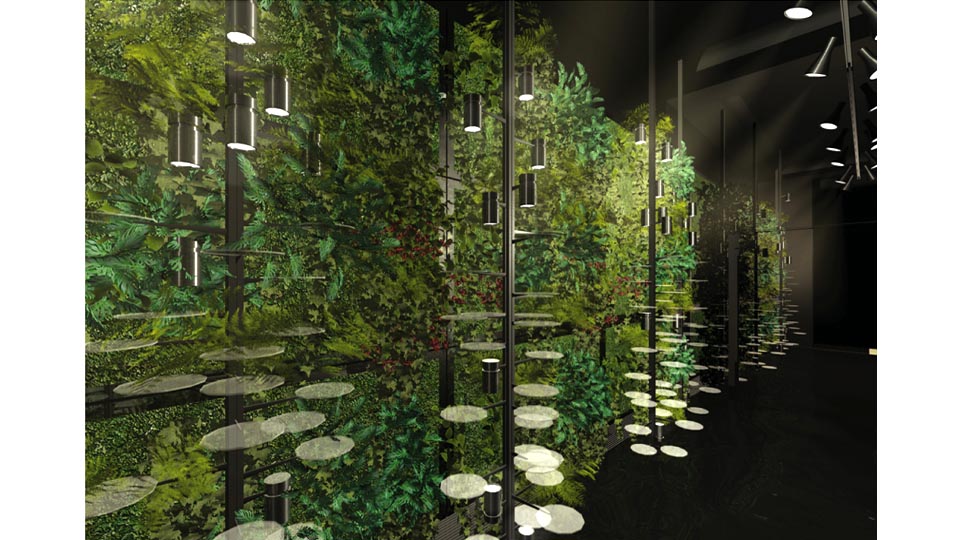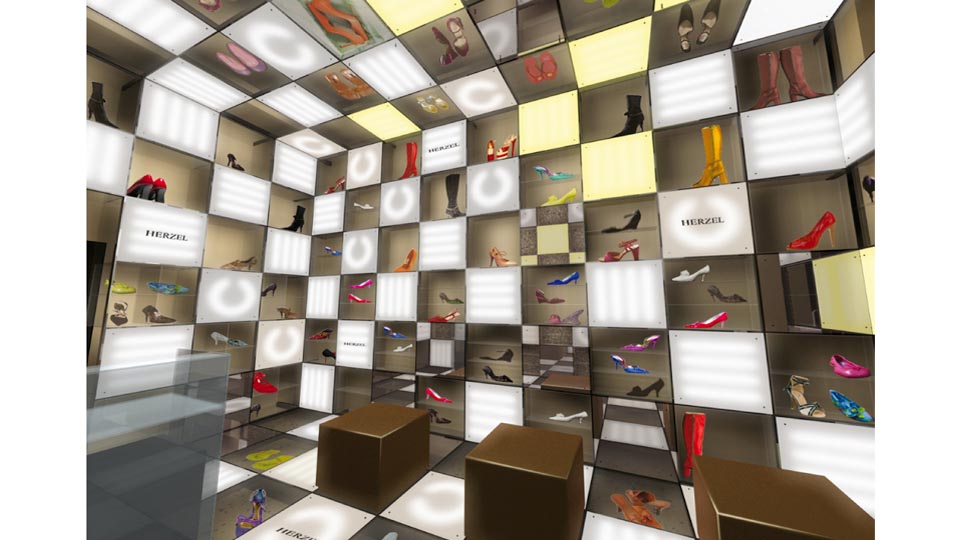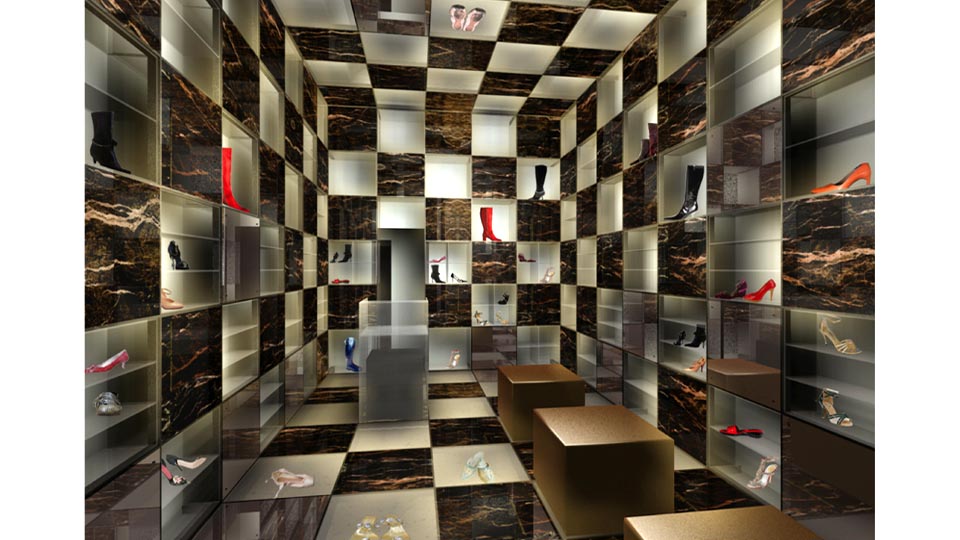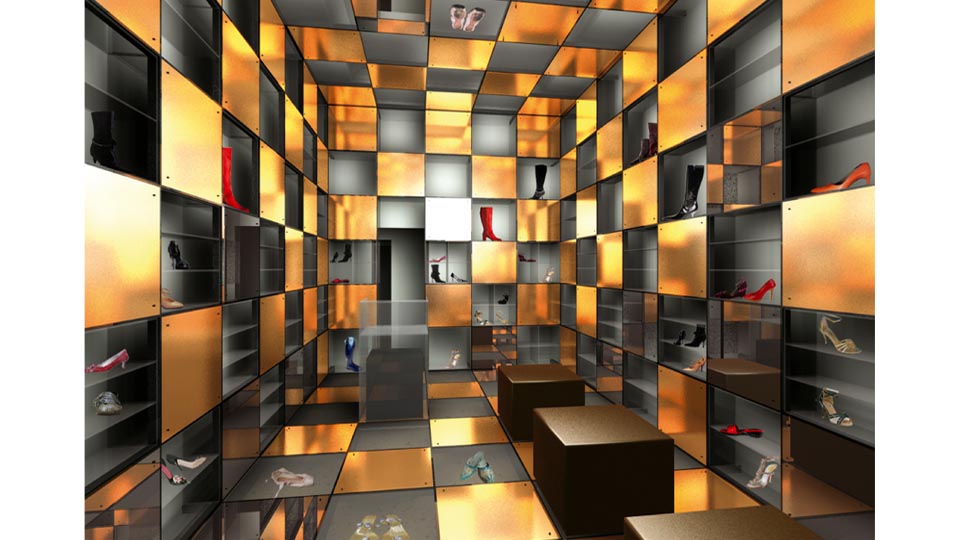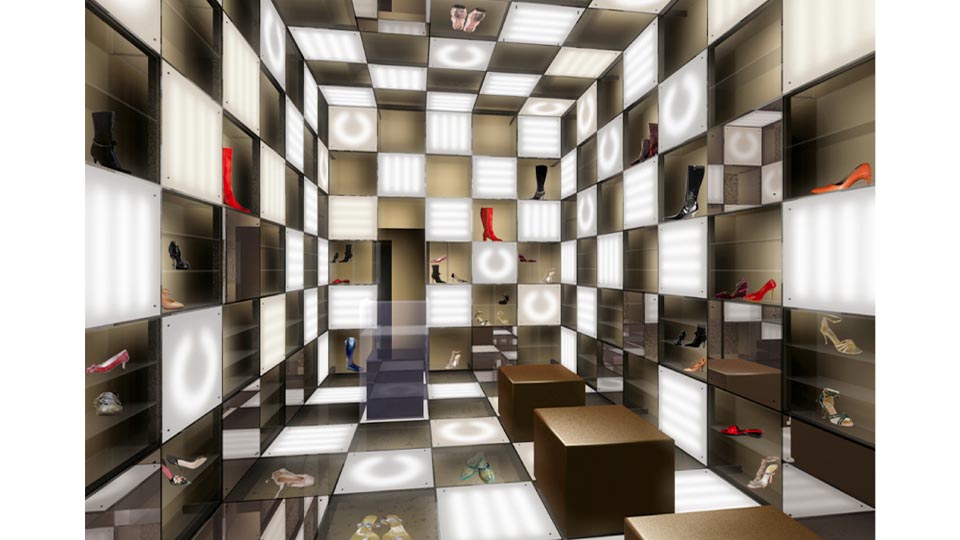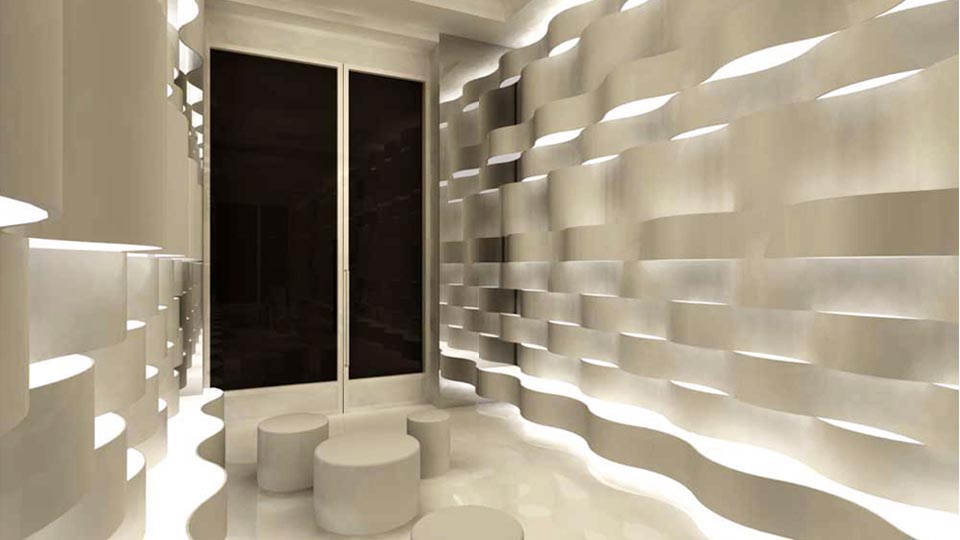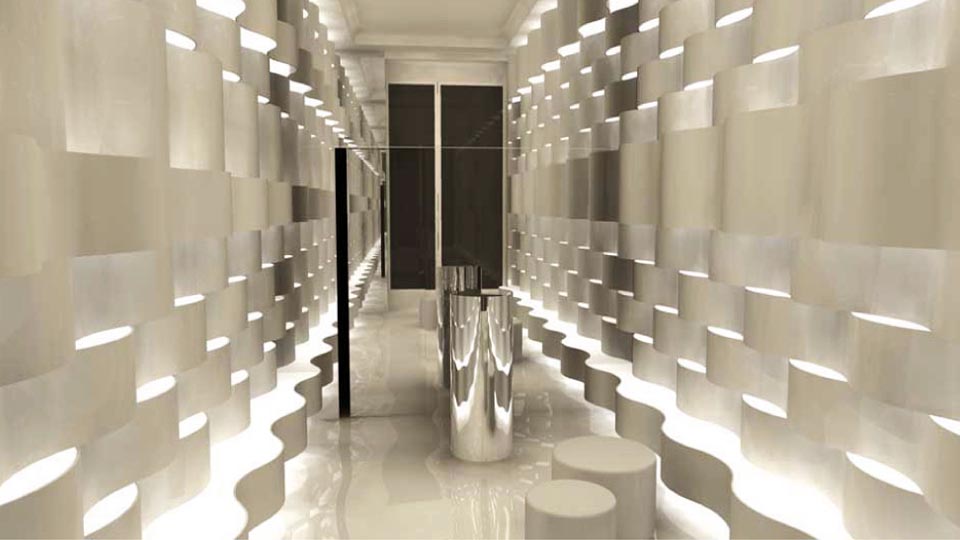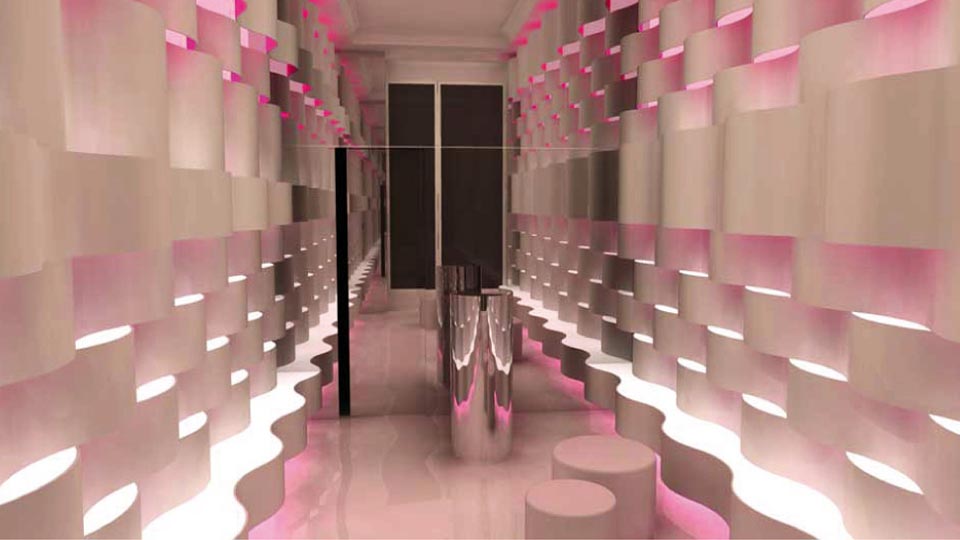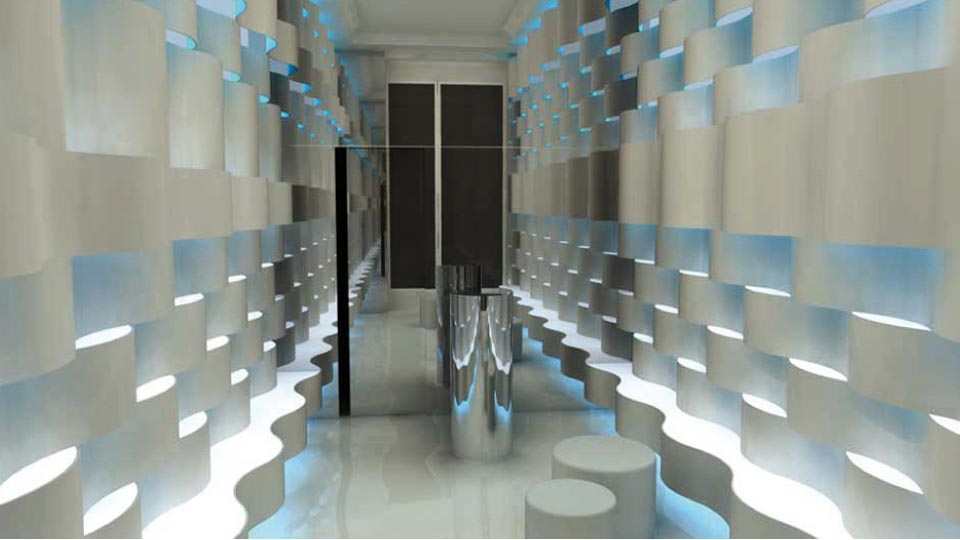HERZEL Spagna
3 Concepts for the New Image of an Immersive Extrasmall Showroom
Year
2006
Type
Retail
Size
XS
Status
Concept Design
Project team
P.I.U. architecture - Rome
Location
Piazza di Spagna, Rome, Italy
Client
HERZEL - Herzel de Bach
Video
Video 1Concept
Three studies for the new image of a small showroom.
- Experimentation with a continuous wall, a portion of vertical, pure nature, inserted into a small interior. A vertical, natural field, serving both as a sign and a disconcerting backdrop, on which the accessories, small and precious as flowers, can be highlighted and exhibited.
- A metal structure enveloping flooring, walls and ceiling to create a continuous, immersive space, maximizing the window surface. The continuous window accommodates lights and accessories, declaring the definitive detachment between the finishing and the former walls. A colored, temporary sticker filters the lights, easily and completely changing the shop’s image. The general image is defined by a mix of products and “pure” materials, oscillating between gold, alabaster, newspaper or toilet paper.
- A curved wall, both displaying the products and hiding them in its curves, allows for a changing, indirect lighting that reacts to the visitors’ number and position in the small shopping space. A mirror on the rear wall doubles the space perception.
Tre ipotesi di progetto per l’immagine di uno showroom.
- Prima ipotesi: sperimentare una grande parete verticale contenente una porzione di natura, ricondotta all’interno di uno spazio chiuso opportunamente strutturato e climatizzato. Una grande quinta vegetale, come segnale e fondale straniato sul quale si stagliano i prodotti, minuti e colorati come fiori, esposti al passaggio dei clienti.
- Seconda ipotesi: una struttura metallica che rivesta pareti, soffitto e pavimento in modo continuo. La griglia omogenea crea uno strato avvolgente, che ospita al suo interno lampade ed oggetti e dichiara lo scollamento tra rivestimento e scatola muraria preesistente. Un filtro colorato semitrasparente riveste le lampade, consentendo di cambiare colori e finiture dell’involucro, virando l’immagine complessiva dalla foglia d’oro all’alabastro traslucido fino alla carta da giornale riciclata.
- Terza ipotesi: una parete ondulata che, nelle tasche ricavate dalle sue oscillazioni, ospita la merce e consente una illuminazione indiretta, che cambia continuamente. Le variazioni cromatiche reagiscono al mutare delle condizioni di affollamento e passaggio nel negozio, mentre un grande fondale rivestito di specchio raddoppia la profondità dello spazio.
??????
?????
????????????????
?????
????????????????????
?????
?????2006-2007
?????45??????????????
?????
?????????
???????????????????????????????????
??????????????????????????????????
????????????????????????????????
???????????????????????????????????
???????????????????????????????????
???????????????????????????????????
???????????????????????????????????
??????????????
???????????????????????????????
